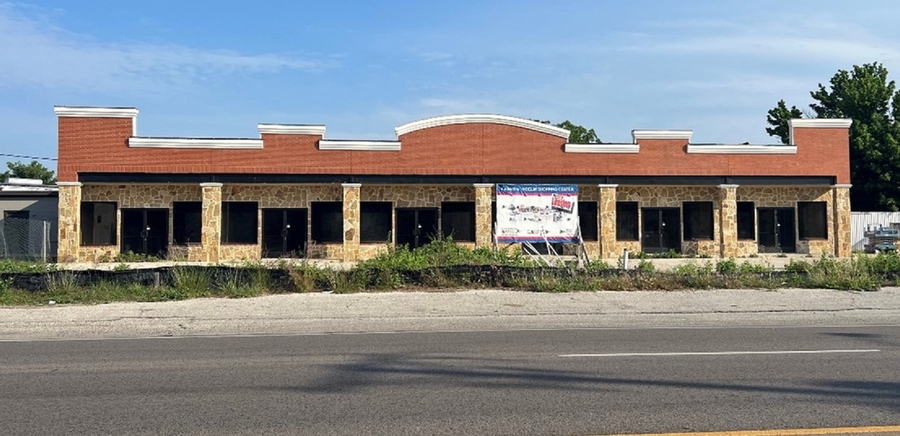The report continues to concern business owners and landlords because it does not address the declining central and southern parts of the city.
HALTOM CITY, TX, August 25, 2023 /24-7PressRelease/ — Haltom City small business owners continue to express concern about the declining southern and central parts of the city. Reviewing the recent report to citizens by city staff, they point out that only one item of substance, a Tax Incremental Reinvestment Zone (TIRZ) is mentioned relative to restoring the declining parts of the city.
Joe Palmer, Director of Communications for Haltom United Business Alliance says that city staff and the council are clearly focused on larger projects primarily on the north part of the city. “Our review of the projects listed shows that almost all of them are in the northern part of the city,” claims Palmer.
The following are direct quotes from the city’s report, each accompanied by HUBA’s responses.
“In recent years Haltom City has enjoyed record growth in terms of economic development. Many of these developments have recently been completed while others are in the construction process.”
HUBA Response: The city deserves applause for the completion of these significant projects. However, citizens and businesses in the southern parts of the city have heard no such plan for revitalizing their areas, nor has the city selected their part of the city for locating the large warehouses and other developments as the north side of the city has benefitted from. There is simply no reason that the city cannot adopt and execute a plan that fairly improves both north and south business communities together, particularly because the south side is more in decline.
“We position ourselves to become even more economically competitive in attracting the types of businesses and amenities….”
HUBA Response – The businesses community has submitted many ideas for attracting new businesses to Haltom City, including a third- party study filled with detailed and specific recommendations on how to accomplish this. None of these ideas were considered by the council. HUBA is not aware of any actionable, measurable plan to improve the aging areas. City management wants to define success in terms of sales taxes or development fees, but the citizens and business owners can see with their own eyes that these areas, which are arguably the most important corridors for the city, are actually in serious decline. Countless studies have concluded that small businesses are more valuable than large businesses in that they create more sales tax, employment, business personal property taxes, and ad valorem taxes. It’s important to note that large distribution centers, by state law, do not collect or remit sales taxes. The city seems focused on bringing retail, while almost everyone knows that those plans are troubled. Also, HUBA doesn’t believe that cities should be trying to attract certain types of businesses. Those businesses that fit legally in the zoning categories and use matrix should be allowed. The matrix should also be reviewed, to make it easier for businesses to come without council permission, as it currently is. Cities simply have no business trying to pick winners and losers in an effort to control commerce or economics, and that’s likely why the vacancy rates are so high in the city.
“Over the past several years the City Council has lowered the property tax rate to its lowest rate since 2010.”
HUBA Response – The city continues to point out that they lowered the tax rate, while not noting that because property values are up so much, the city received approximately one million more dollars in revenue. The citizens and business owners can see their tax bills, and they know they are up. True progress will be made when the total tax levy is lowered.
“Lowering the tax rate is also instrumental in attracting new businesses.”
HUBA Response – Lower property taxes offer very little, if any, incentive in attracting new business, especially when considering increasing vacancies of the aging vacant buildings. They are somewhat helpful for new developments, although likely remain the least important of many factors, according to real estate developer Ron Sturgeon, a HUBA founding member. Also, Strong Towns (a pro-change non-profit) doesn’t even consider them important to bring small businesses into an area.
“As a result, we have funded more road improvements over the past five years than ever before. The first step was to attract the highest and best use (i.e., profitable) businesses by rezoning for large distribution and warehouse centers.”
HUBA Response – Unfortunately, as with many of the comments, this simply does not address the declining parts of South and Central Haltom City, and moreover, assumes that large distribution centers are the only solution even though studies of economic development prove that nurturing small businesses would be more beneficial to the city.
“The City Council recently approved a 740+ acre Tax Increment Revitalization Zone (TIRZ)”
HUBA Response – The business association has pointed out many times that a 30-year TIRZ can only contribute to public improvements. It cannot help small businesses trying to open or occupy older buildings. Also, it is unlikely to have any noticeable funds for 5 years, and improvements are needed much faster.
“The city currently has development agreements that will bring in numerous restaurant, retail, and entertainment options. As soon as interest rates come down and the national economy bounces back these developments will move forward.”
HUBA Response – A plan that is waiting for interest to come down is doomed to failure; it will be at least 5 years before interest comes back to the 6% range. Also, a plan that counts on retail, especially in the older parts of town in declining corridors is also fraught with issues. HUBA suspects this comment, as with most here, is focused on the northern part of town, rather than on Haltom City’s declining corridors.
“Retail developments would not be possible if we did not utilize the “Back to the Basics Plan”
HUBA Response – Retail is dying in all but the newest strongest locations. No one should count on retail to revitalize the older parts of town.
“All cities lose businesses and gain businesses every year. Our commercial vacancy rate is lower than some of our surrounding neighbors. Property owners will generally start making improvements and updating their buildings as our city starts to attract new developments and our economic turnaround continues to bring new money into our town. The plan is working.”
HUBA Response – None of this applies to the older parts of town. Denton Highway has a 28% vacancy rate, and other main corridors have very high vacancy rates, higher than surrounding cities. Landlords need tenants to make improvements, and with no plan to revitalize the needed areas, that is not going to happen. Also, it can only happen one business at a time, and the city needs a better value offering than surrounding cities to have any hope of attracting businesses back to the corridors.
City’s Summary
• Lowest tax rate since 2010
• Record new Economic Development
• Commercial – approximately 2 million square feet
• Residential – estimated 2 thousand residential units
• Record Commitment to road replacement and repair
• New City Hall
• New Police Station
• New Fire Station
• New Senior Center
HUBA Response – The city should be commended for its efforts to attract so much new business to the north side. The summary includes 3 new city buildings, a “record low” that still leaves Haltom City residents with increased tax bills, and a commitment to repair roads. Most of the items in the summary are unlikely to influence the revitalization of the declining areas. The comments seem to address the northern parts of the city only.
According to the Haltom United Business Alliance (HUBA), Haltom City appears to be using zoning rules as a weapon to try and influence the economics of commerce. HUBA Founder Ron Sturgeon maintains that cities do not have the expertise, nor the right, to use zoning rules in such a manner. “As an example, a city might try to use their rules to, for instance, get more retail when retail is shrinking, because they are myopic about collecting more sales taxes instead of just getting more businesses to occupy older buildings. In the long run, this narrow-minded strategy will fail”, according to Sturgeon. He adds, “I’ve spoken with more than one prospective business, turned away at the city’s counter, and told that the city didn’t want their use. The city wanted retail, instead.”
Research has shown that a wide variety of small businesses are needed to build a successful urban neighborhood. Strong Towns, a nonprofit that advocates for cities to be safe, livable, and inviting says, “These are not just retailers selling goods to end users, but a wide variety of commercial uses that make up the market of a city — dental surgery clinics, print shops, legal offices, smoke shops, shoe repairs, flooring supplies, custom jewelers, etc.”
In its article “The Case for Small Commercial Spaces,” Strong Towns claims that focusing on retail will favor the big chains and franchises and will essentially leave cities “with streetscapes of vacant storefronts” for an undetermined period of time. In urban areas, “small commercial spaces are important for incubating local businesses (that often do not need or cannot afford a larger space).
Incubating and supporting small businesses is important because they are they are the best job creators, they serve as a tool to reduce wealth inequality, and healthy capitalism requires new players constantly entering the market.”
Additionally, and contrary to popular belief, large developments and distribution centers are not the biggest source of sales tax revenue or the best drivers of employment. According to the United States Small Business Association, small businesses make up a whopping 99.7% of U.S. employer firms. Additionally, small businesses accounted for 64% of net new jobs created between the years of 1993 and 2011.
“The older parts of a town usually generate much more revenue per acre for a city than larger new developments. But having too many rules on business startups ends up discouraging all but the largest of businesses, while businesses with fewer resources and less money to invest choose locations in other cities where small business activity is encouraged and valued,” says local business owner Sturgeon.
In addition to his work with HUBA, Sturgeon is spearheading an effort to call attention to the problems in Haltom City and educate citizens about the need for change. More information about the project can be found on the “Make Haltom City Thrive Again” website. According to Sturgeon, anyone who lives or works in Haltom City and is hoping for a brighter future for themselves, their children, and their community should consider getting involved.
About Make Haltom City Thrive Again
The Make Haltom City Thrive Again website offers information and resources about its purpose and goals. For more on Sturgeon’s personal ideas and background, check out his book Keeping the Lights on Downtown in America’s Small Cities and watch the videos on his Facebook page. Ron is also the founder of the Haltom United Business Alliance (HUBA) which represents existing business interests in Haltom City and promotes growth of diverse businesses as well. HUBA is not a political action committee and does not endorse candidates. If/when Ron endorses candidates, he will do so on his own with the Make Haltom City Thrive Again organization.
About Haltom United Business Alliance
Haltom United Business Alliance (HUBA) is a group of business owners dedicated to representing existing business interests in Haltom City and promoting the growth of diverse businesses as well. Innovative strategies are needed to create a strong tax base and enhance quality of life for residents, city employees, and business owners. All Haltom City business owners are eligible to join HUBA. For more information, contact Joe Palmer at (682) 310-0591 or by email at HUBAgrp@gmail.com or visit the group’s Facebook page at Haltom United Business Alliance.
—
For the original version of this press release, please visit 24-7PressRelease.com here





